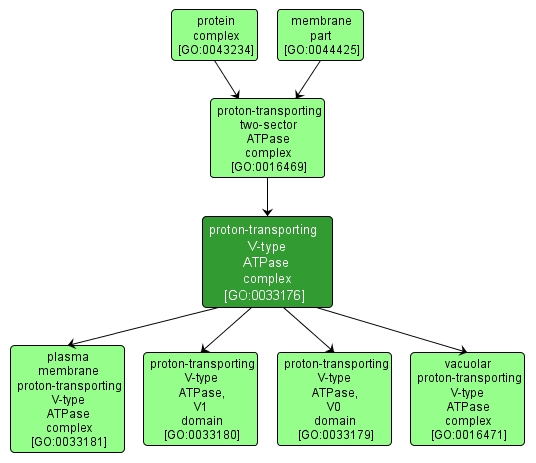| Desc: |
A proton-transporting two-sector ATPase complex that couples ATP hydrolysis to the transport of protons across a concentration gradient. The resulting transmembrane electrochemical potential of H+ is used to drive a variety of (i) secondary active transport systems via H+-dependent symporters and antiporters and (ii) channel-mediated transport systems. The complex comprises a membrane sector (V0) that carries out proton transport and a cytoplasmic compartment sector (V1) that catalyzes ATP hydrolysis. V-type ATPases are found in the membranes of organelles such as vacuoles, endosomes, and lysosomes, and in the plasma membrane. |














